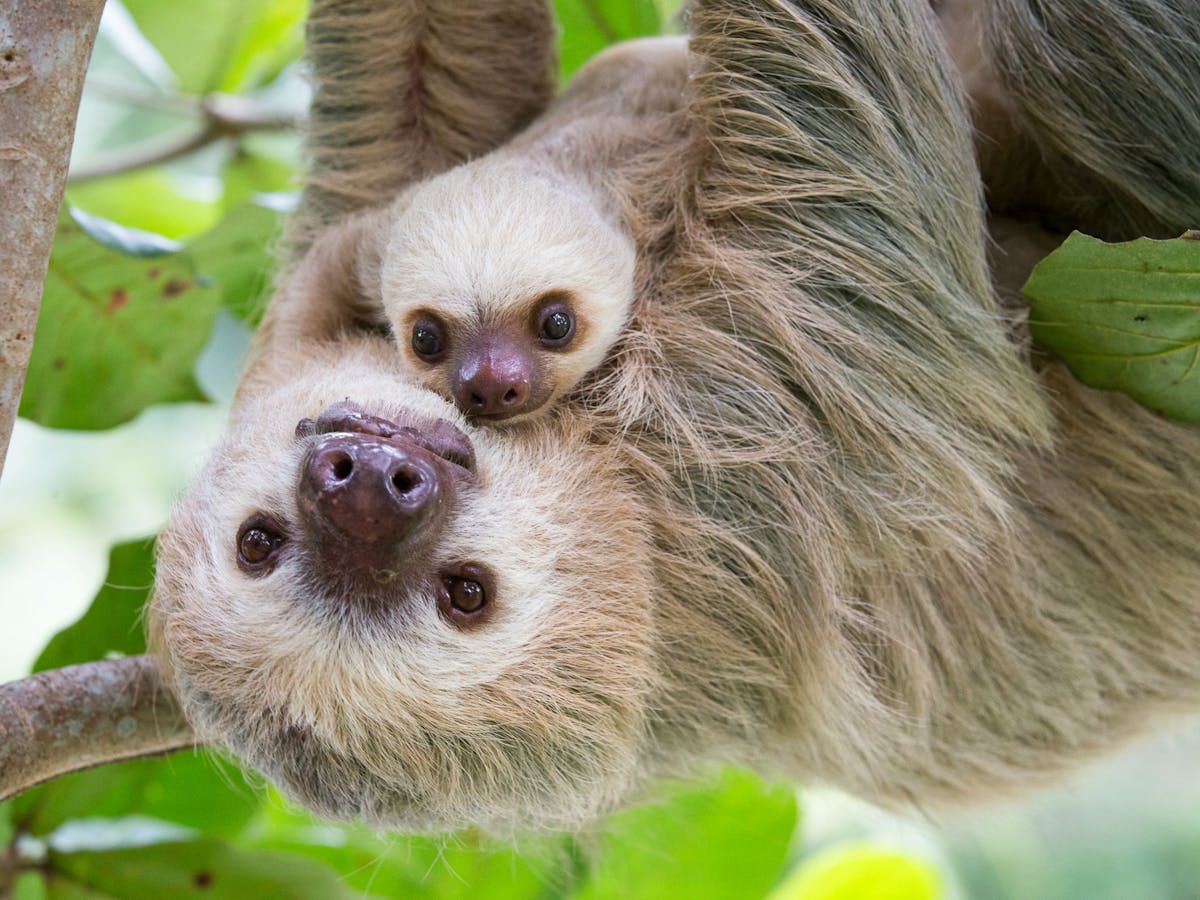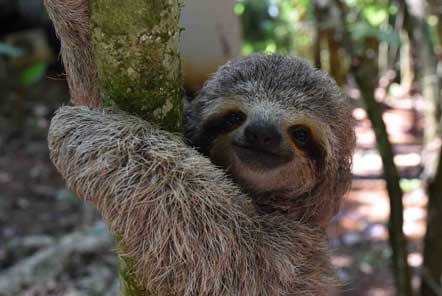Check out our awesome range of animal facts for kids and learn some fun trivia about our friends in the animal kingdom.
Fun Sloth Facts for Kids
Enjoy our range of fun sloth facts for kids. Learn what they eat, how far sloths can extend their tongue, where they live, why sloths move so slowly and lots more interesting information. Read on and check out our cool trivia about sloths. |
- Facts About Sloths
- 3 Sloth Facts
- 3 Toed Sloth Facts

Facts About Sloths

- 3) Sloths have been moved around by humans. Finally (and perhaps most importantly), we discovered that sloths in the West, East and South East groups were all surprisingly similar. This close relatedness between sloths living on opposite sides of Costa Rica is an unexpected and potentially concerning result.
- In the wild, sloths typically live quiet, sleepy lives. When used as props for tourist photos, they are constantly surrounded by noise and poorly handled by both guides and tourists alike Found in Central and South America, sloths call the tall trees their home, as their long claws make it.
3 Sloth Facts
In the wild, sloths typically live quiet, sleepy lives. When used as props for tourist photos, they are constantly surrounded by noise and poorly handled by both guides and tourists alike Found in Central and South America, sloths call the tall trees their home, as their long claws make it difficult for them to walk on the ground.

3 Toed Sloth Facts
Sloths are a medium-sized mammal. There are two types of sloth the two-toed sloth and the three-toed sloth, they are classified into six different species. All sloths actually have three toes, but the two-toed sloth has only two fingers. Sloths are part of the order Pilosa so they are related to anteaters and armadillos. Sloths are tree-dwelling animals, they are found in the jungles of Central and South America. A sloth's body is usually 50 to 60 cm long. Skeletons of now extinct species of sloth suggest some varieties used to be as large as elephants. Sloths mainly eat the tree buds, new shoots, fruit and leaves, of the Cecropia tree. Some two-toed sloths also eat insects, small reptiles, and birds. Sloths have a four-part stomach that very slowly digests the tough leaves they eat, it can sometimes take up to a month for them to digest a meal. Digesting this diet means a sloth has very little energy left to move around making it one of the slowest moving animals in the world. Sloths can move along the ground at just 2 m (6.5 ft) per minute! In the trees they are slightly quicker at 3 m (10 ft) per minute. The slow-movement and unique thick fur of the sloth make it a great habitat for other creatures such as moths, beetles, cockroaches, fungi, and algae. In fact, this green colored algae provides a camouflage so sloths can avoid predators. Sloths can extend their tongues 10 to 12 inches out of their mouths. The sloth has very long, sharp, and strong claws that they use to hold on to tree branches. The claws are also their only natural defense against predators. Sloths usually only leave the tree they live in to go to the toilet once a week on the ground. This is when they are most vulnerable to being attacked by their main predators such as jaguars, the harpy eagle and snakes. Two-toed sloths are nocturnal, being most active at night. While three-toed sloths are diurnal which means they are most active during the day. It used to be thought sloths slept for 15 to 20 hours a day. However, its now believed they only sleep around 10 hours a day. In the wild, sloths live on average 10 - 16 years and in captivity over 30 years.
|


